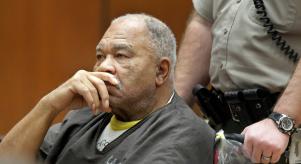
This man lived with the mummified bodies of his wife and daughter
Tell Me How I DiedThe Kaneko family case is one of the most perplexing and tragic incidents in recent history, baffling both the residents of Rexburg, Idaho and experts across the US.
In 2004, law enforcement discovered David Kaneko living with the mummified bodies of his wife, Lorraine, and daughter, Laura, in their family home. The chilling case raises profound questions about mental health, religious extremism and familial responsibility.
The shocking discovery
In August 2004, local authorities in Rexburg responded to a welfare check at the Kaneko household. What they found was deeply distressing. The bodies of Lorraine Kaneko, 58, and her daughter Laura, 33, were discovered in an advanced state of decomposition.
They were lying side by side on a bed and covered with blankets. What made the discovery even more shocking was the fact that David Kaneko, Lorraine’s husband and Laura’s father, had been living with their remains for over a year.
The women’s bodies were so badly decomposed that forensic experts had to rely on autopsies and forensic anthropology to determine the causes of death. It was revealed that both Lorraine and Laura had died from starvation, with Laura dying in 2001 and Lorraine in 2003.
Despite this, David continued to reside in the home as though nothing had changed and failed to notify authorities.
A dark religious belief
The Kaneko family had previously lived a normal family life but became increasingly reclusive over several years. Family members repeatedly raised concerns and requested welfare checks as communication dried up. But Lorraine and Laura reassured authorities that they were safe and living at the home voluntarily.
It later emerged that they had been followers of an extremely unorthodox religious belief system. This, combined with severe mental illness, played a critical role in their demise.
From accessing Lorraine and Laura’s journals, authorities discovered they believed they were receiving divine revelations. This resulted in them adopting a restricted diet and living in isolation – and was part of Laura’s spiritual preparation before marrying an apostle.
The severity of their dietary restrictions led to malnutrition, dehydration and eventual death. David, despite being present throughout, failed to intervene and save his wife and daughter. It raised questions about his mental state and level of involvement in these fatal decisions.
He later explained that he also believed in the divine mission his family was following, though the courts scrutinised his role in their deaths.
Legal outcome and public outcry
Following the grim discovery of the bodies, David Kaneko was charged with two counts of involuntary manslaughter, abandonment of a vulnerable adult and desertion. The case, which made headlines nationwide, centred around the extent of David’s responsibility. Though he hadn’t caused their deaths directly, his failure to intervene and get help was seen as a significant contributing factor.
In 2007, David was sentenced to four to 10 years in prison but was given a six-month mental health rider programme due to concerns over his psychological state.
After completing the programme and serving his sentence, David sought to have his criminal record cleared in 2014. His request, however, was met with strong opposition from the local community, who felt that the trauma of the case could not be easily forgotten.
Psychological and social implications
The Kaneko family case shines a light on the impact of isolation, religious extremism and mental illness on vulnerable individuals. David’s inaction, while tragic, can be understood within the broader context of a person trapped within a dangerous belief system.
His apparent acceptance of the divine revelations that led to his family’s starvation points to a broader issue of how deeply held beliefs can distort someone’s sense of reality and responsibility.
Mental health professionals, including those involved in David’s court-ordered treatment, speculated that he may have been under severe psychological strain during the years leading up to and following his family’s deaths. However, the full extent of his mental competence at the time of Lorraine and Laura’s deaths remains unclear to this day.
The legacy of the case
In 2016, David died of cancer at the age of 76. The fate of his family stands as a stark reminder of the hidden tragedies that can occur in the most unsuspecting of places.
While the physical evidence of the case has long been resolved, the emotional and psychological scars remain – both for the Kaneko family’s surviving relatives and the wider community. The case remains a shocking example of how mental health, religious beliefs and personal responsibility can lead to devastating consequences.
Above all, this cautionary tale reminds us of the important role mental health support and social intervention play in preventing such tragedies from occurring in the future.








